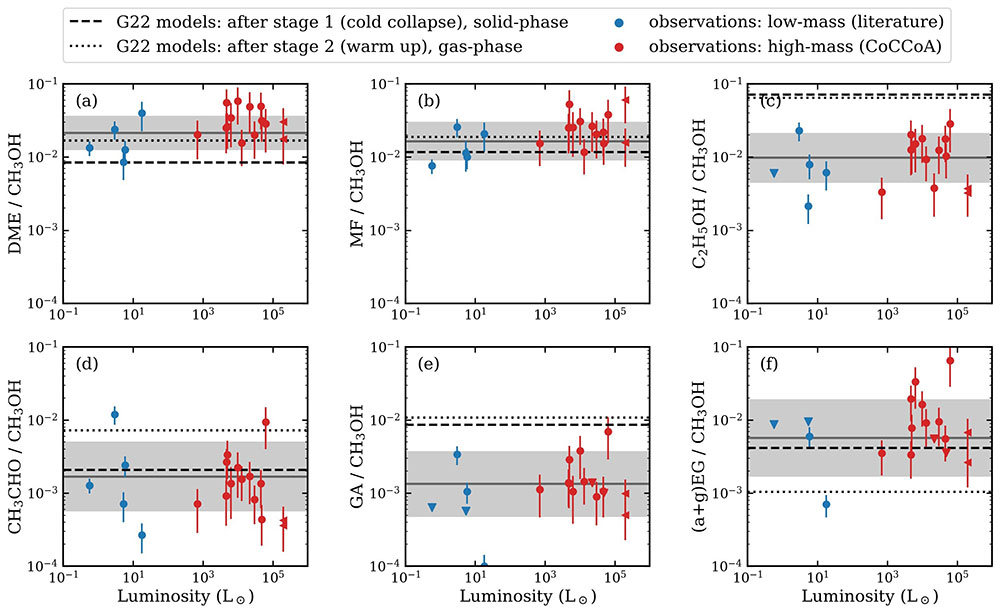New center article - Yuan Chen
New paper on the observation of COMs in hot cores

Title: CoCCoA: Complex Chemistry in hot Cores with ALMA. Selected oxygen-bearing species
Summary: Complex organic molecules (COMs) have been observed to be abundant in the gas phase toward protostars, while statistical studies on oxygen-bearing COMs (O-COMs) in high-mass protostars using ALMA are still lacking. With the recent CoCCoA survey, we are able to determine the column density ratios of six O-COMs with respect to methanol (CH3OH) in a sample of 14 high-mass protostellar sources to investigate their formation history through ice and/or gas-phase chemistry. The selected O-COMs are CH3CHO, C2H5OH, CH3OCH3, CH3OCHO, CH2OHCHO, and (CH2OH)2. We compare their ratios wrt CH3OH in high-mass CoCCoA sources with those in 5 low-mass protostars available from the literature, along with the results from experiments and simulations. We find that the O-COM ratios are interestingly on the same level in both the high- and low-mass samples, which suggests that these species are mainly formed in similar environments during star formation, probably in ice mantles on dust grains during early pre-stellar stages. Current simulations and experiments can reproduce most observational trends with a few exceptions, and hypotheses exist to explain the differences between observations and simulations/experiments.
